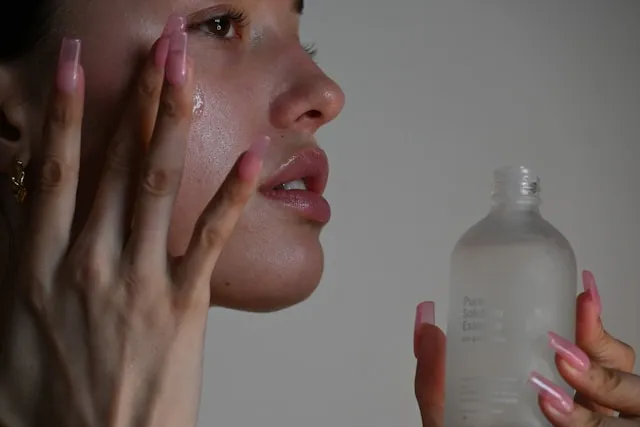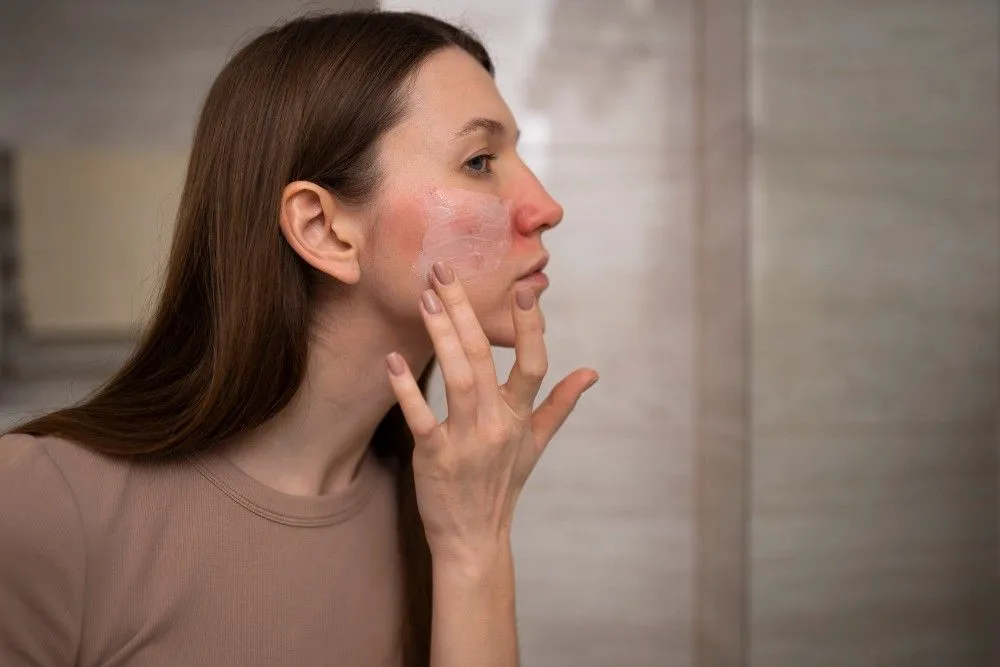Struggling with uneven skin tone, dark spots, or patches that won't fade away? You are not alone. Millions of people, especially women in the U.S.A. are dealing with this skin issue called hyperpigmentation. It occurs due to excessive melanin production which darkens the skin. But, don't worry as effective treatments are available. From incredible skincare products to procedures, the best treatment plan can help achieve a radiant and even skin tone. This blog will guide you on the best hyperpigmentation treatment options available in 2025 and also some tips for the prevention of hyperpigmentation. Read on!
What is Hyperpigmentation?
Hyperpigmentation occurs when certain areas of your skin produce more melanin than usual, leading to darker patches or spots. It can occur in different forms, including:
-
Sunspots: Caused by too much sun exposure, particularly in older adults. Gives tan, brown, or black spots on the skin.
-
Melasma: Frequently triggered by hormonal changes due to birth control pills or during pregnancy. Gives dark patches on the face.
-
Post-inflammatory hyperpigmentation (PIH): Appears after inflammation, acne, or an injury. Leaves dark spots or patches behind.
-
Freckles: Occurs more prominently due to sun exposure or genetics.
7 Best Hyperpigmentation Treatment
Different treatment methods and home remedies can help get rid of hyperpigmentation:
1. Topical Treatments
-
Retinoids: The example includes tretinoin which replaces old, damaged skin cells with new ones, helping remove dark spots and enhance skin texture.
-
Vitamin C: This potent antioxidant lightens dark spots and fights off free radicals that cause pigmentation.
-
Niacinamide (Vitamin B3): This vitamin prevents the transfer of melanin to the skin cells and reduces the pore’s appearance.
-
Alpha Hydroxy Acids (AHAs): Glycolic and lactic acids are the perfect exfoliants that remove old skin cells, thus preventing the buildup of excess pigmentation and helping achieve even skin tone.
-
Hydroquinone: Fade away dark spots and lighten the skin tone by blocking the production of melanin.
-
Azelaic Acid: Its anti-inflammatory effects prevent dark spots and also treat acne or skin irritation.
-
Kojic Acid: Blocks the activity of the enzyme "tyrosinase" which is essential for melanin synthesis.
2. Chemical Peels
Chemical peels use stronger acidic solutions to peel off the outermost skin layers (epidermis) that promote new skin cells. This treatment can prevent stubborn hyperpigmentation, especially caused by sun exposure or acne.
-
Glycolic acid peels: Helps shed off the upper layer of dead skin, preventing pigmentation.
-
Salicylic acid peels: Especially an ideal option for acne-related hyperpigmentation.
If you experience the treatment's side effects like redness, irritation, blistering, scarring, infection, and allergic reactions, immediately consult the dermatologist.
3. Laser Treatments
These treatments use beams of light to treat hyperpigmentation. Research says that laser therapies are effective and fast but should be used with caution to prevent the risk of post-inflammatory hyperpigmentation.
-
Ablative Lasers: The most intense laser treatment that peels off layers of the skin, stimulating the production of collagen and the formation of new skin. But, they cause more side effects.
-
Non-ablative Lasers: Targets dermis (middle skin layer) that supports skin tightening and collagen production. They are gentler and have faster recovery, but offer less dramatic results.
Caution: Laser treatments can cause post-inflammatory hyperpigmentation in darker skin tones if not done by a qualified professional.
4. Intense Pulsed Light Therapy (IPL)
This is also a type of laser treatment, also called photofacial that helps promote collagen growth in the middle layer of the skin.
-
It helps treat all types of hyperpigmentation but shows effective results for flat spots. It also reduces the appearance of large pores, spider veins, and wrinkles.
-
This therapy requires multiple sessions and works perfectly for individuals with fair skin tones.
5. Microneedling
It involves creating micro-injuries on the surface of the skin with the help of tiny needles. This, in turn, stimulates the production of collagen and elastin, helping prevent hyperpigmentation.
-
The best treatment for fading away dark spots, post-inflammatory hyperpigmentation, and post-acne scars.
-
The treatment takes multiple sessions in a gap of 3-8 weeks.
Read Also How Can Microneedling Help with Hyperpigmentation?
6. Microdermabrasion
This cosmetic procedure treats hyperpigmentation that impacts the epidermis (the outermost layer of the skin). It involves the use of a drill-like tool having a wire brush that is quickly but gently swiped all over the skin.
-
The treatment takes multiple sessions to treat melasma, age spots, brown spots, and uneven skin texture and tone.
-
But, there are the chances of side effects such as mild tenderness, redness, and swelling that subsides within a few hours
7. Dermabrasion
This treatment helps remove hyperpigmentation from the epidermis, but its effects go deep down to the dermis. The procedure is the same as the microdermabrasion but it along with the entire epidermis also removes the dead skin cells from the upper layer of the dermis.
-
This treatment is an ideal option for faster removal of pigmentation and works best for fair skin tones.
-
The side effects such as redness and swelling can occur which resolves on its own.
Note: Make sure to get all the treatments done by professionals only. Report all the side effects to the dermatologists in case you experience them after the treatment.
Best Treatment For Hyperpigmentation
Skin tone plays a key role in the length and intensity of hyperpigmentation treatment. Fair and medium skin tone needs less time for the treatments to show results compared to dark skin tones.
-
For mild hyperpigmentation: OTC or over-the-counter treatments like topical creams including retinoids, Vitamin C, or niacinamide may be sufficient.
-
For severe hyperpigmentation: Professional treatments such as laser therapy, chemical peels, intense pulsed light therapy, or microneedling might be necessary.
Here's which treatment option works best for different types of skin tones:
|
Treatment |
Best For |
|
Topical Treatments (Niacinamide, Hydroquinone, or Vitamin C) |
All skin types, but use hydroquinone carefully on dark skin tones. |
|
Topical treatments (Retinoids or Azelaic Acid) |
Safe for all skin tones, but use retinoids carefully for sensitive skin. |
|
Chemical Peels (Salicylic or Glycolic Acid) |
All skin types, especially medium skin tones. For darker tones, use with caution to prevent the risk of irritation. |
|
Microneedling |
Works best for all skin tones. |
|
Laser Treatments |
All skin tones, but majorly darker skin tones. |
|
Microdermabrasion |
Effective for medium and dark skin tones. |
|
Dermabrasion |
Safe for fair skin tones. |
Darker skin tones are more prone to treatment side effects like PIH (Post-inflammatory Hyperpigmentation). Always consult a dermatologist.
Tips to Prevent Hyperpigmentation
With potent treatments, it's crucial to prevent hyperpigmentation from occurring again. So, protect your skin by following these measures:
-
Apply Sunscreen Daily: Use broad-spectrum SPF of 30 or above every day, even when indoors or on cloudy days
-
Avoid Peak Sun Hours: Direct sun exposure is mostly extreme between 10 a.m. - 4 p.m., so, avoid direct contact in these hours
-
Reapply Sunscreen: Reapply your sunscreen every 2 hours, particularly if you sweat a lot or are swimming
-
Wear Protective Clothes: When outdoors, wear protective clothes, sunglasses, and hats for additional coverage, preventing the effect of UV rays
-
Don’t Squeeze Pimples: This action can lead to post-inflammatory hyperpigmentation (PIH).
Final Thoughts
Several hyperpigmentation treatment options such as topical creams, laser therapy, chemical peels, or microneedling can help reduce dark spots and melasma, giving a radiant and even skin tone. However, be consistent and use sun protection to enhance the effectiveness of the treatments and prevent further damage to the skin. Whether it's fair or dark skin complexion, consulting the dermatologist can help with a customized treatment plan that suits your skin’s needs and type.
Enjoy all the benefits of hyperpigmentation treatments and say goodbye to dark spots or patches and uneven skin tone!
अक्सर पूछे जाने वाले प्रश्नों
How do you fade hyperpigmentation fast?
Professional treatments like chemical peels, microneedling, or laser therapy can rapidly help remove hyperpigmentation.
Does anything really work for hyperpigmentation?
Yes, topical as well as professional treatments can work for hyperpigmentation depending on the type and severity of the pigmentation.
Which serum is best for hyperpigmentation?
Kojic Acid Serum works best for hyperpigmentation by inhibiting the activity of tyrosinase which is responsible for melanin synthesis.
How long does it take to clear hyperpigmentation?
It typically takes 3 to 6 months to clear hyperpigmentation by consistently following the treatment.
Which oil fades pigmentation?
Lemon, tea tree, geranium, sandalwood, and turmeric oil can help fade pigmentation.
लेखक





